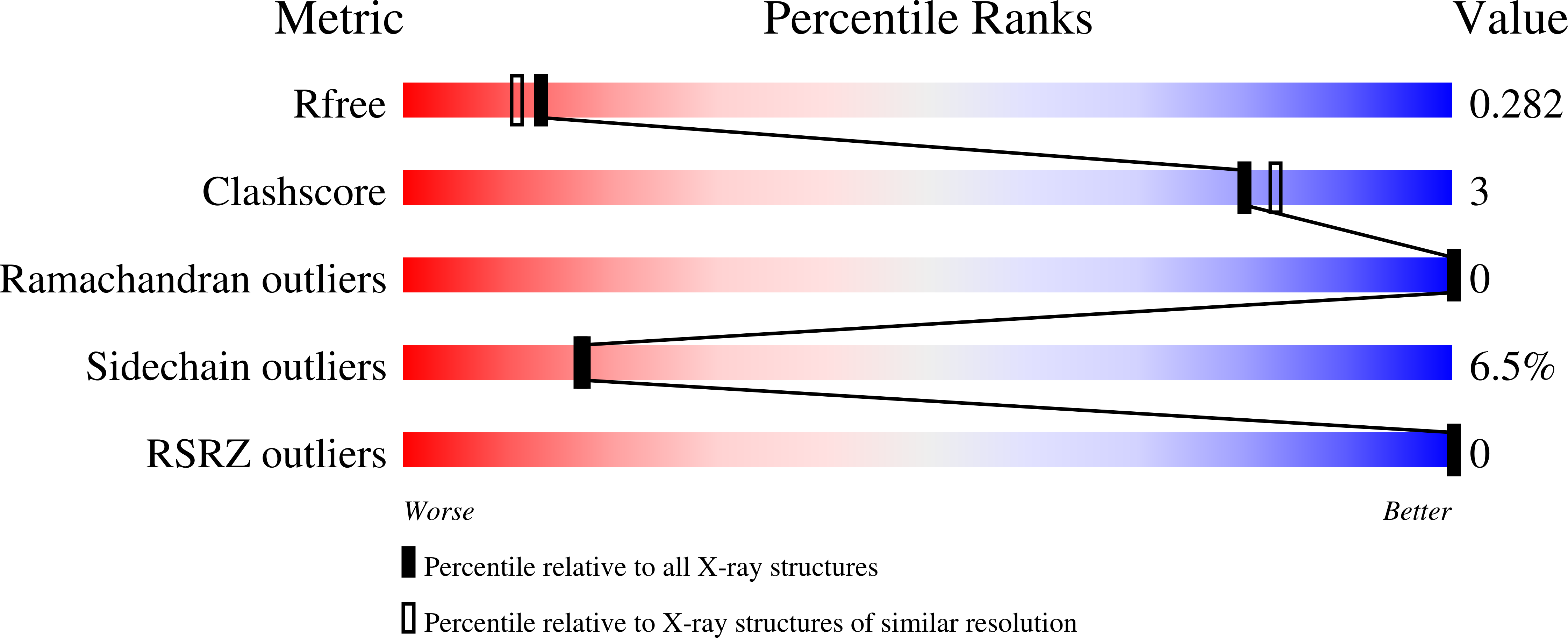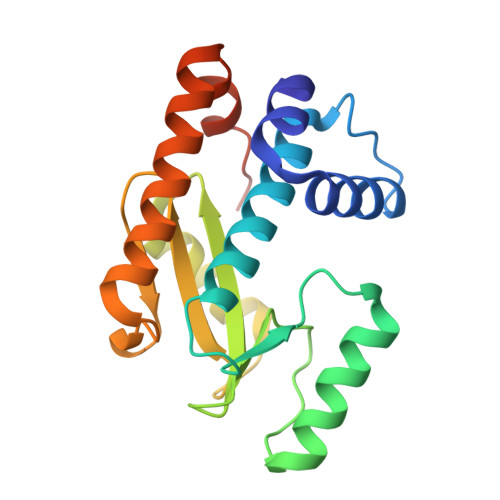Identification and characterization of influenza variants resistant to a viral endonuclease inhibitor.
Song, M.S., Kumar, G., Shadrick, W.R., Zhou, W., Jeevan, T., Li, Z., Slavish, P.J., Fabrizio, T.P., Yoon, S.W., Webb, T.R., Webby, R.J., White, S.W.(2016) Proc Natl Acad Sci U S A 113: 3669-3674
- PubMed: 26976575
- DOI: https://doi.org/10.1073/pnas.1519772113
- Primary Citation of Related Structures:
5CCY, 5CGV, 5CL0, 5CZN, 5D2O, 5D42, 5D4G, 5D8U, 5D9J, 5DBS, 5DEB, 5DES - PubMed Abstract:
The influenza endonuclease is an essential subdomain of the viral RNA polymerase. It processes host pre-mRNAs to serve as primers for viral mRNA and is an attractive target for antiinfluenza drug discovery. Compound L-742,001 is a prototypical endonuclease inhibitor, and we found that repeated passaging of influenza virus in the presence of this drug did not lead to the development of resistant mutant strains. Reduced sensitivity to L-742,001 could only be induced by creating point mutations via a random mutagenesis strategy. These mutations mapped to the endonuclease active site where they can directly impact inhibitor binding. Engineered viruses containing the mutations showed resistance to L-742,001 both in vitro and in vivo, with only a modest reduction in fitness. Introduction of the mutations into a second virus also increased its resistance to the inhibitor. Using the isolated wild-type and mutant endonuclease domains, we used kinetics, inhibitor binding and crystallography to characterize how the two most significant mutations elicit resistance to L-742,001. These studies lay the foundation for the development of a new class of influenza therapeutics with reduced potential for the development of clinical endonuclease inhibitor-resistant influenza strains.
Organizational Affiliation:
Department of Infectious Diseases, St. Jude Children's Research Hospital, Memphis, TN 38105;

















